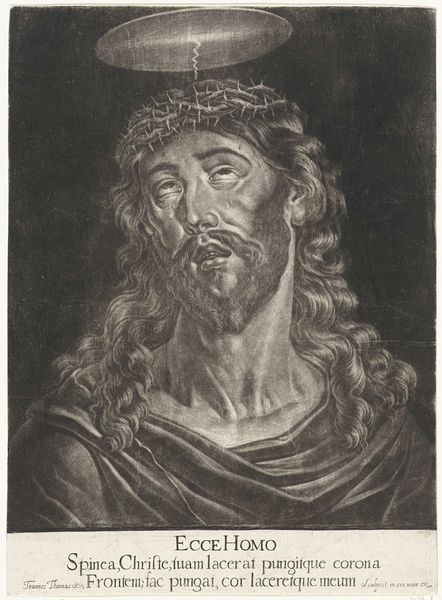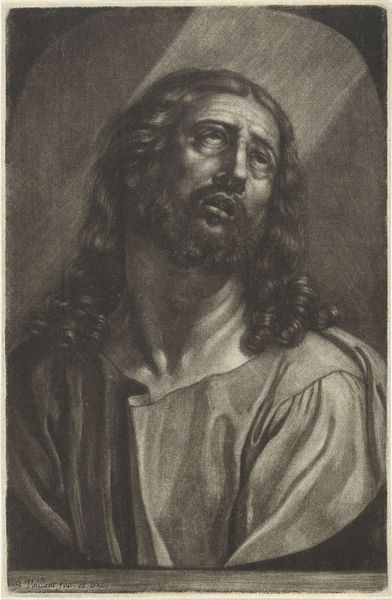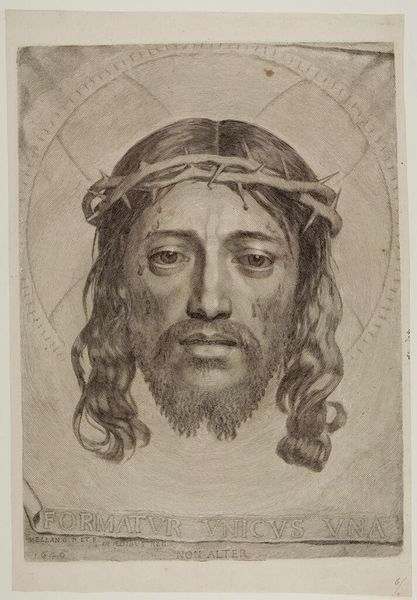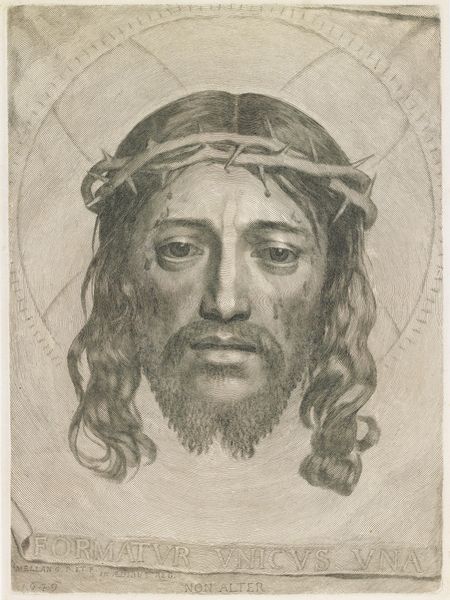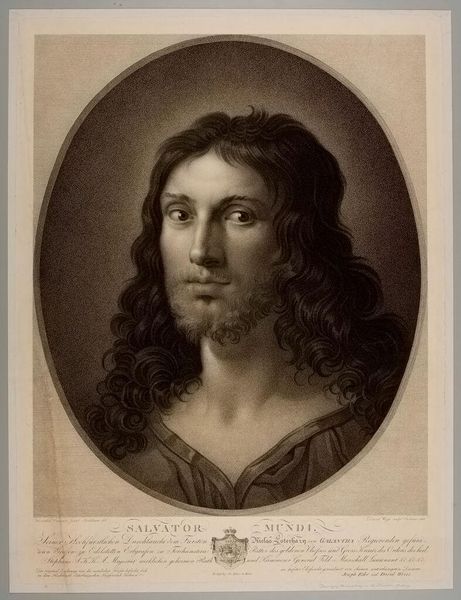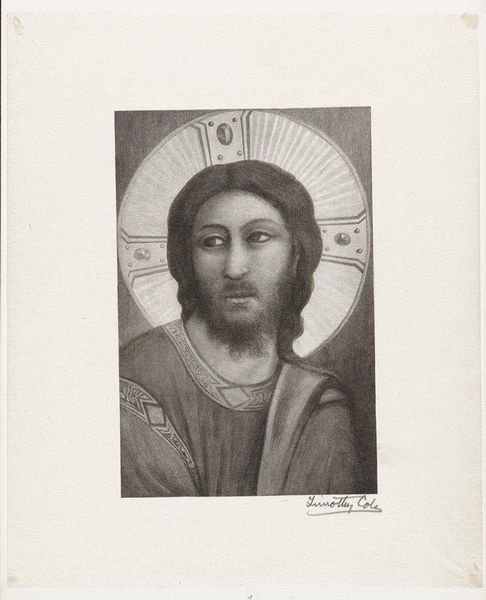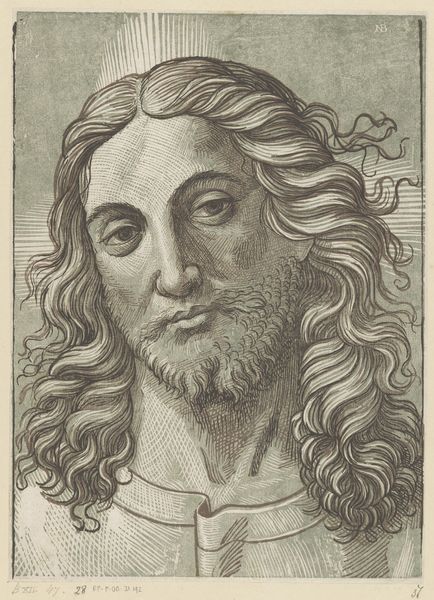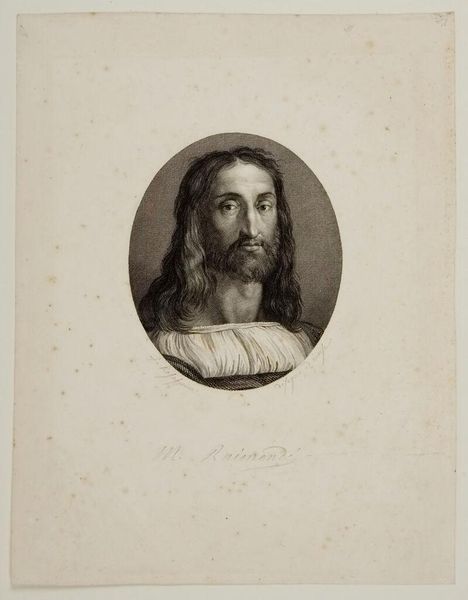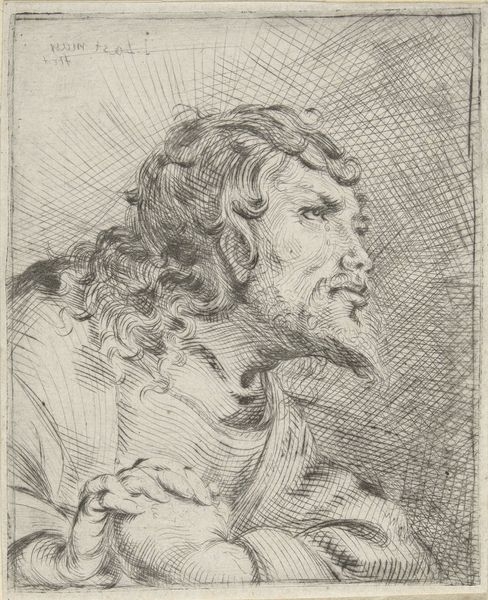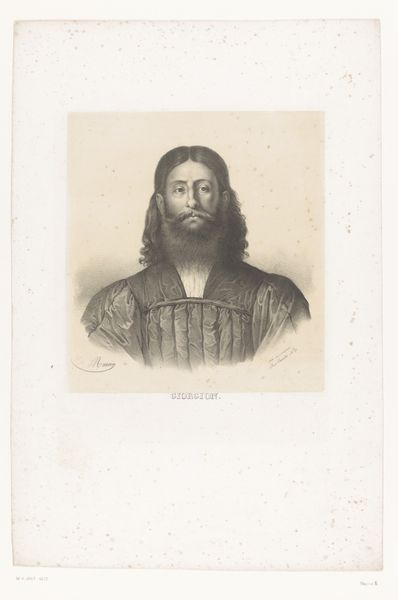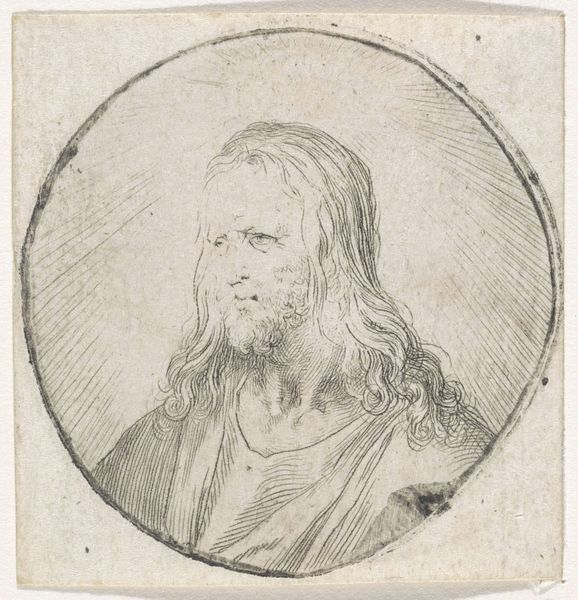
print, engraving
#
portrait
#
baroque
# print
#
portrait drawing
#
history-painting
#
engraving
#
portrait art
#
monochrome
Dimensions: height 170 mm, width 160 mm
Copyright: Rijks Museum: Open Domain
Editor: Here we have "Christus," an engraving, likely dating between 1655 and 1700, attributed to Jan van Somer. It's quite striking in its simplicity – a monochrome portrait. What particularly catches my eye is the dramatic lighting; it almost feels like the figure is radiating light. How do you interpret this work through a formal lens? Curator: Observe how the artist uses the engraving technique. The density and direction of the lines are meticulously controlled. The chiaroscuro effect is not merely decorative but structurally integral. Light here defines form and guides the eye, creating volume and depth within the flatness of the print. Notice the areas of intense darkness, strategically placed to heighten the luminescence of the face. Is this merely representation, or a structured system of light and dark? Editor: So, it’s less about *who* is being portrayed and more about *how* the light and shadow are arranged to create a certain visual experience? Curator: Precisely. We can explore the relationship between the varying textures achieved through the engraving. Consider the contrast between the smoothly rendered skin and the coarser texture of the beard and hair. These are not just surface details, but structural elements. How does this interplay of textures contribute to the overall composition? Editor: That’s fascinating! I was initially drawn to the supposed subject of the image, but now I see how the actual power comes from the artist’s skillful manipulation of light and texture. Curator: Indeed, through this process of close visual analysis, we arrive at an appreciation that transcends mere representation. The formal elements speak for themselves, constructing meaning independent of iconographic concerns.
Comments
No comments
Be the first to comment and join the conversation on the ultimate creative platform.
